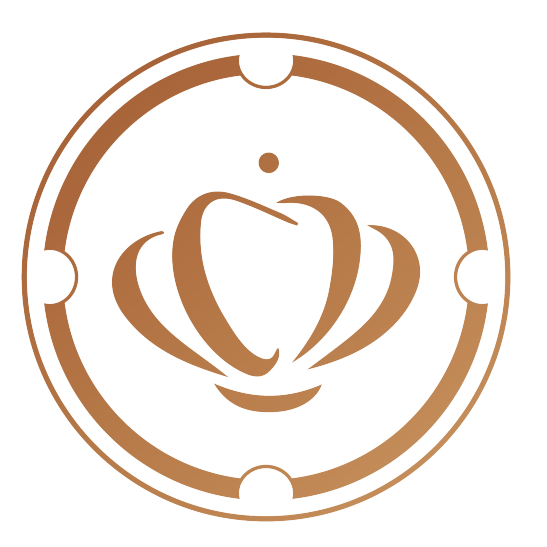Buying a quality diamond begins with 3Cs—not 4. Surprising? Cut, clarity and color all determine diamond quality, but carat doesn’t. After all, size doesn’t affect quality. Learn how to buy a stunning diamond based on 3Cs, fluorescence and shape.
What Affects Diamond Quality?
A diamond’s beauty comes from both nature and nurture. Nature creates diamond rough of different colors and with different inclusions. Humans cut the rough, choosing which of the 4Cs (Cut, Color, Clarity and Carat Weight) to prioritize. Should the cutter cut most of the inclusions away to get a high-clarity stone? Or should the cutter try to keep the diamond as large as possible? The quality of a diamond therefore depends on both the raw material and what cutters and polishers choose to do with the diamond. Of the 4Cs, only cut, color and clarity determine diamond quality. Carat doesn’t, because a tiny diamond can be as beautiful and well-crafted as a much larger diamond. And of the 4Cs, only cut is completely within human control for natural, untreated diamonds, because cut is determined by the quality of craftsmanship.
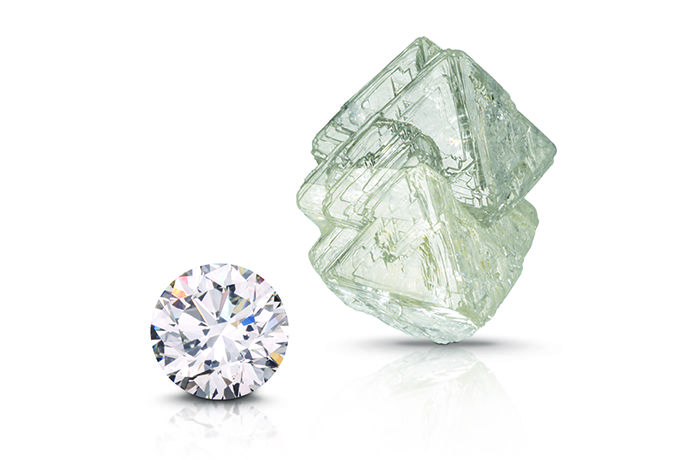
TaWhat is Diamond Shape Quality?
C
It’s easy to evaluate the shape quality of round brilliant diamonds. Round brilliant diamonds should be—well, round! Most round brilliant diamonds, especially those with Excellent or Very Good Cut grades, are very round, or at least so round that you can’t detect any variance with the unaided eye.
Fancy cut diamonds are where things get more complex. They don’t receive cut grades from GIA, because there is such a wide variety of shapes and cutting styles, each with its own length-to-width ratios and set of standards. Personal preference plays a big part, too. Here are 4 things to look out for in fancy shapes:
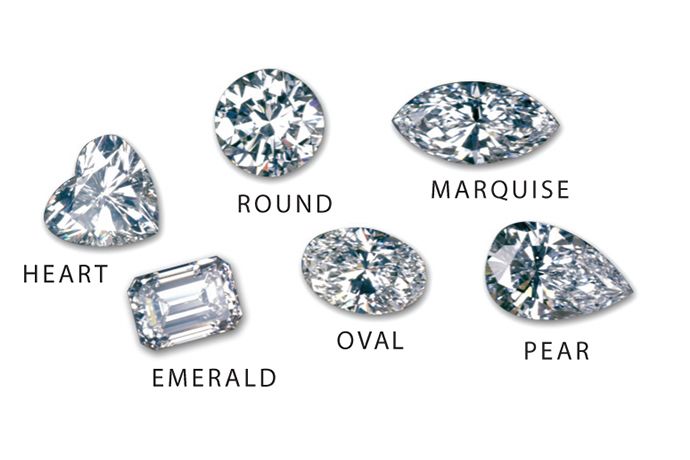
- Length-to-Width Ratio: The L-to-W ratio is the relationship between the length and width of a fancy shape, with the width expressed as the number one. Most people find certain ratios more attractive than others. For example, emerald cuts, rectangular cushion cuts and pears are most popular in L-to-W ratios between 1.50:1 and 1.75:1. L-to-W ratios are also important to consider because gems that are too long and narrow are prone to breaking.
- Line Symmetry: For hearts and pears, the diamond’s outline should be the same on both sides when you draw a line down the middle. For ovals, squares, rectangular cuts and marquises, the diamond’s outline should be the same on each side vertically and horizontally. Symmetry makes a diamond look crisp and neat and contributes to maximizing a diamond’s brilliance. A fancy cut diamond’s GIA grading report does not contain a cut grade but does tell you the stone’s symmetry and polish grades.
- Smooth Curves: Curved shapes like hearts, pears and ovals should have full, rounded “lobes” or “shoulders.” Curves should flow smoothly and not have harsh-looking flat spots.
- Defined Shape: It should be obvious what shape a diamond is. A heart, for example, should have a defined cleft and crisp opposing point and not look like a flat pear. The attractiveness of a diamond’s shape can sometimes depend on ratio. An oval with too low of a length-to-width ratio might look like an uneven round.
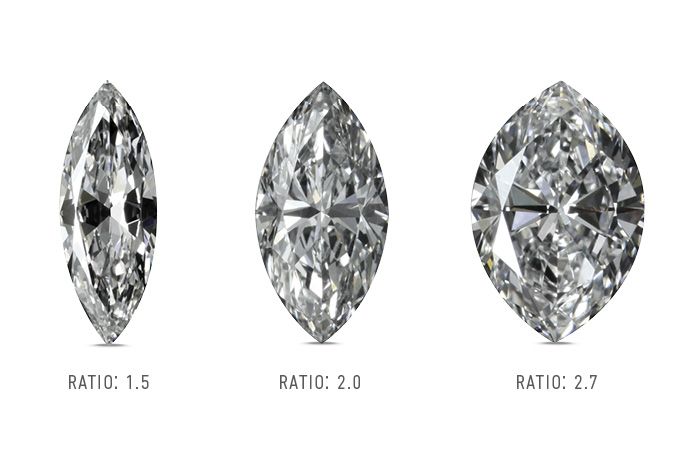
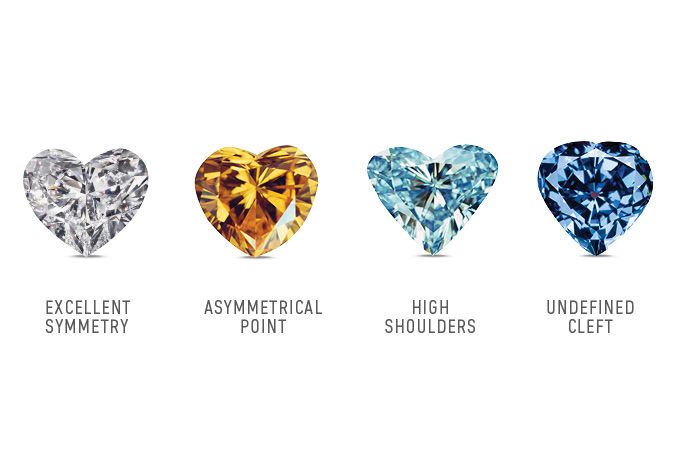
What is Diamond Cut Quality?
Cut quality refers to how well a diamond’s proportions, design and finish work together to create a beautiful diamond. Proportion has to do with the angles and relative size of a diamond’s facets. Design refers to a diamond’s weight ratio (a diamond can have too much or too little weight for its diameter) and durability (the risk of damage due to vulnerable thin areas). Finish consists of two factors—polish (the quality and neatness of facet surfaces) and symmetry (the arrangement and placement of facets). Combined, these factors reflect the quality of workmanship that went into cutting a diamond. Cut quality is important because it affects how a diamond interacts with light, therefore determining a diamond’s brightness, fire and scintillation.
What are brightness, fire and scintillation and why do they matter?
Briefly, brightness is the white light that a diamond reflects from its facets back to the viewer’s eyes. Fire is the colorful flashes that a viewer sees when a diamond breaks up white light into spectral colors. Scintillation is the sparkle and pattern of light and dark areas that viewers see when the diamond or the viewer moves.
These are the three factors help a diamond display a spectacular light show.
Round brilliant diamonds can receive cut grades from GIA, while fancy cut diamonds don’t. Whether your diamond has a cut grade or not, here’s how to check your diamond for cut quality factors:
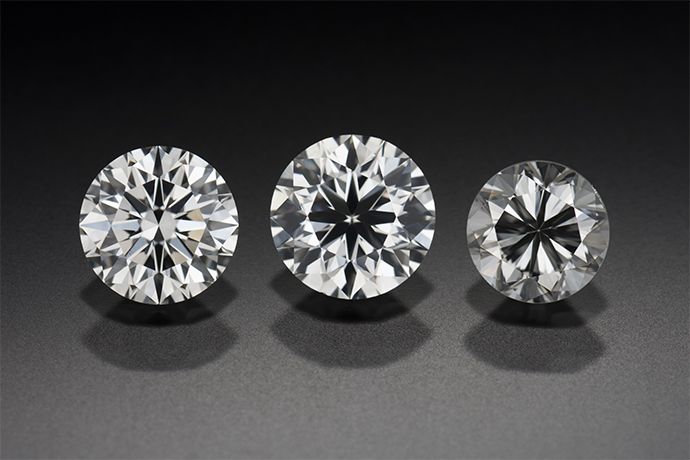
- Check your diamond’s brightness and scintillation under diffused (white) light. Does your diamond reflect back a lot of white light (brightness)? Does it flash a lot when you turn it from side to side (scintillation)? Are the bright and dark areas evenly distributed (pattern)? If the answer is yes, that means your diamond was well-cut.
- Check your diamond’s fire under incandescent lighting. Does your diamond flash with lots of fire? You want a diamond with as much fire as possible in all the colors of the rainbow.
- Look at your diamond under different lighting. Lighting environments change its appearance dramatically from diffused to spot lighting. Does it look good in a restaurant, outdoors, in your office? If your diamond looks amazing under different light sources, chances are you’ve got a quality diamond!
Sartorial man What is Diamond Color Quality?
Except for very rare fancy white color diamonds, what most people call “white” diamonds are actually colorless diamonds. And most colorless diamonds aren’t actually colorless but have hints of yellow, gray or brown. That’s why GIA created a D-to-Z color grading scale — to tell people how much (or how little) color a diamond contains.
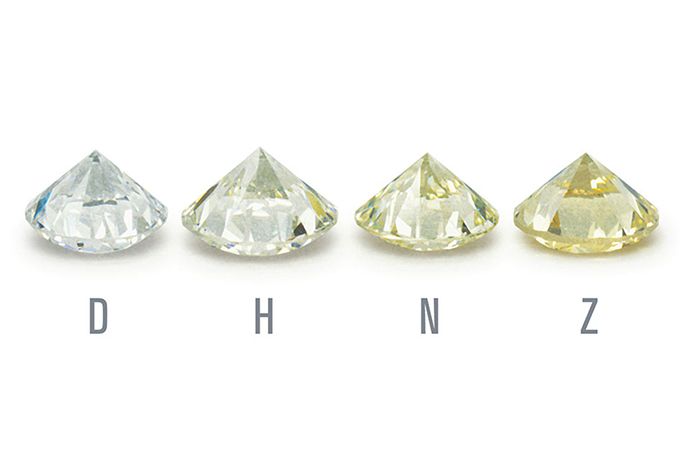
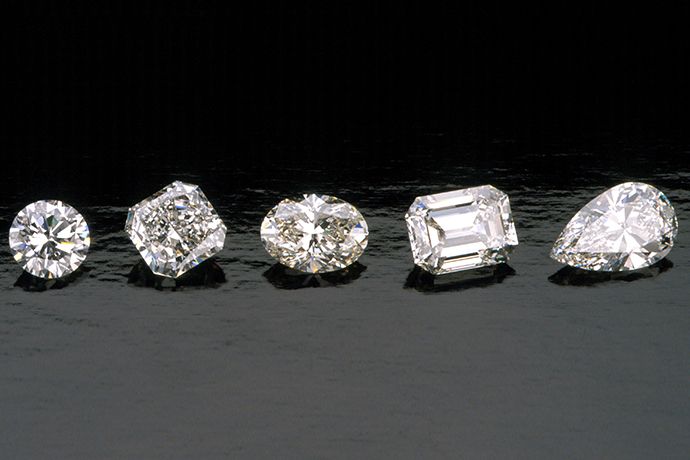
Generally, people prefer diamonds that have as little color as possible. Only D color diamonds are completely colorless. But most people can’t tell that diamonds down to the G range have color, unless they compare it to a diamond of much higher color grade side-by-side. Besides the color grade, here are two other factors that affect a diamond’s color:
- Cut: Brilliant cuts—especially round brilliants—don’t show as much color, partly because they have a lot of facets. All the white light they are able to reflect inside the stone and then back out to the viewers’ eyes makes them appear brighter. Step cuts, such as emerald cuts and Asscher cuts, are less brilliant, because they have fewer and larger facets. Step cuts are valued more for their elegant, gleaming, hall-of-mirrors effect than for their brilliance. Pears, hearts and marquises can appear darker around the tips, because tips concentrate color more. Consider going for a higher color grade if you are buying a step cut diamond or a diamond with one or two tips.
- Setting: If you want a yellow or rose gold ring, save money by getting a G or lower color stone. Setting a D-F color diamond in a yellow or rose gold setting will make the diamond appear warmer in color than it actually is. If you’re getting a white gold or platinum ring, consider getting a stone that is G-H or higher in color grade. Setting an I or lower color grade stone in white gold or platinum can make the stone appear warmer, because the metal will contrast with and emphasize the stone’s color. Setting a warm stone in a yellow or rose gold setting, on the other hand, can help disguise the stone’s color.
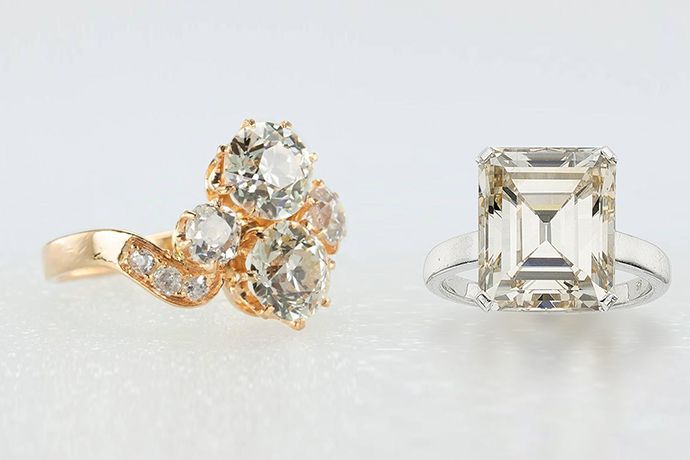
What is Diamond Clarity Quality?
Most diamonds have inclusions that can be seen under 10X magnification—trapped crystals, structural irregularities, etc.—that result from their formation process. These inclusions or clarity characteristics can help identify a diamond as natural and tell scientists a lot about Earth. But most consumers want their diamonds as clear as possible. That’s why GIA came up with the diamond clarity grading scale, which ranges from Flawless and Internally Flawless all the way down to Included. But even Flawless diamonds may not be completely flawless. Flawless just means that no inclusions and blemishes are visible at 10x magnification.
Most diamonds, down to VS2 or even SI1, don’t have inclusions that are easily visible to the unaided eye. The inclusions inside an SI2 or an I (Included) clarity diamond, on the other hand, will be more easily seen by the unaided eye. Of course, this also depends on the vision of the person in question! But in general, budget-conscious consumers can save money by buying a comparable diamond in the VS or SI range; it will likely appear similar with the unaided eye to a diamond with a higher clarity grade. However, if you or the diamond recipient is a perfectionist, you might want to consider clarity grades of VVS2 and above, but know that you will also have to pay a premium.
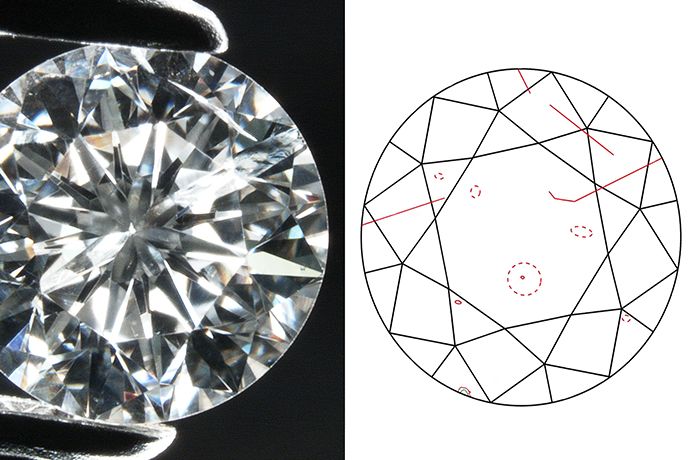
Here’s what to look for in a diamond with good clarity.
- No inclusions visible to the unaided eye. If you can’t see any inclusions or only see a few hard-to-spot inclusions without magnification, then it’s likely that the clarity is high enough for your jewelry purposes.
- Location, size and relief of visible inclusions. Inclusions that are away from the center of the diamond are less visible. They are even less visible if they are hidden near the edge, tips or corners of brilliant cut diamonds (round, marquise, pear, princess, etc.). The high number of facets at the tips and corners of brilliant cut stones will generally distract from minor inclusions. Inclusions near edges might even end up being covered by the jewelry setting. Obviously, smaller and lighter colored inclusions are also more difficult to see and have less impact on the appearance of the diamond.
- Cut style. Inclusions are typically harder to see in brilliant cut diamonds because they have a greater number of facets. More facets means more light bouncing around, creating a complex pattern that hides small inclusions. Inclusions are much more noticeable in step cut diamonds because they have larger and fewer facets and the resulting pattern is not as complex. Consider getting a brilliant cut if you want to go lower in clarity.
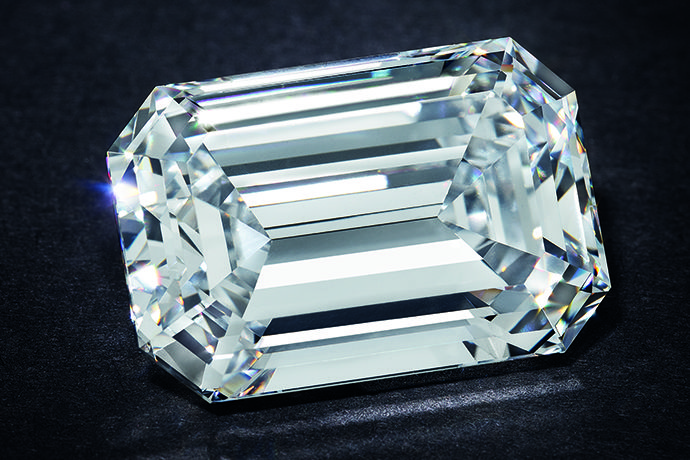
Durability. This is a vital consideration when it comes to diamonds with lower clarity grades. Diamonds in the I clarity range—I2 or I3 in particular—can sometimes have durability issues. Make sure your diamond doesn’t have large chips or fractures (feathers) at the girdle or the tips, because these could make the stone more vulnerable to breaking. Any feathers that a diamond has should preferably be contained within the stone and not surface-reaching.
What is Diamond Fluorescence?
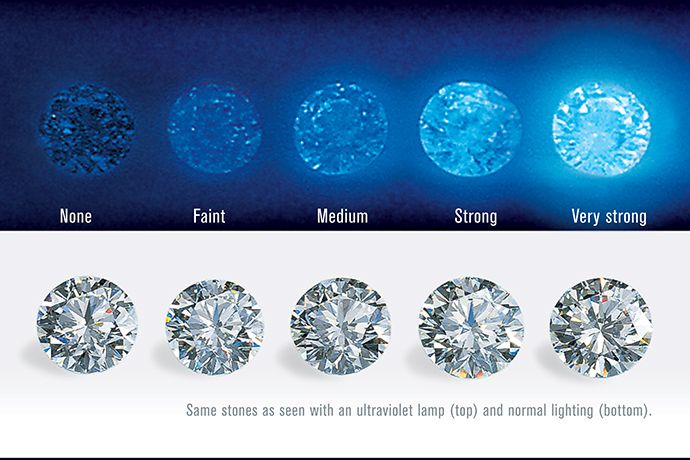
Fluorescence is the visible light (or glow) that some diamonds emit when they are exposed to UV light. About one-third of all diamonds have visible fluorescence. These diamonds sometimes cost slightly less, making them a good value. Some factors to consider for fluorescent diamonds include:
- Color grade of the diamond. Strong fluorescence may lower the value of top color stones (D-F). In rare instances, if the fluorescence is extremely strong, it can make a stone appear milky or hazy. On the other hand, blue fluorescence can increase the value of lower color stones (I and below) because it can reduce the appearance of yellow tones in a diamond.
- Color of fluorescence. More than 95% of fluorescent diamonds fluoresce blue. Other fluorescence colors include yellow, red, green and white. Blue fluorescence can help mask warm tones in a diamond, but yellow or green fluorescence can make a diamond look even warmer or stronger in color. Diamonds with yellow or green fluorescence will typically cost less than diamonds with blue fluorescence.
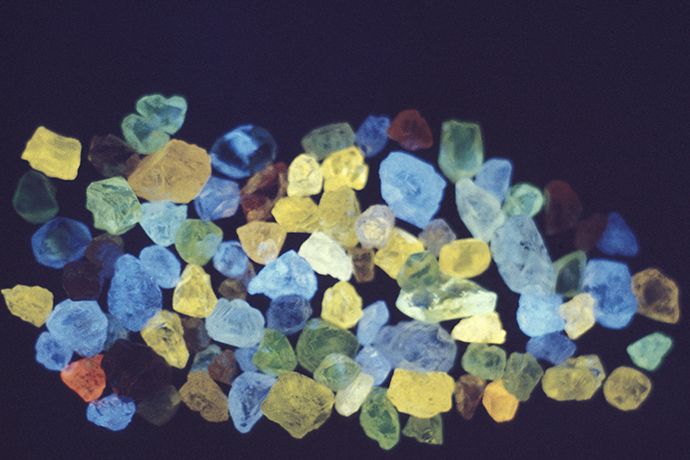
Strength of fluorescence. If a diamond has faint to medium fluorescence, chances are you won’t notice that it’s fluorescent in most lighting environments. Diamonds that have strong to very strong fluorescence may appear milky under sunlight, which contains UV rays. GIA grading reports will note the strength of a diamond’s fluorescence. The most foolproof way of knowing how fluorescence looks in a diamond, however, is to see that diamond in person in different lighting situations.
